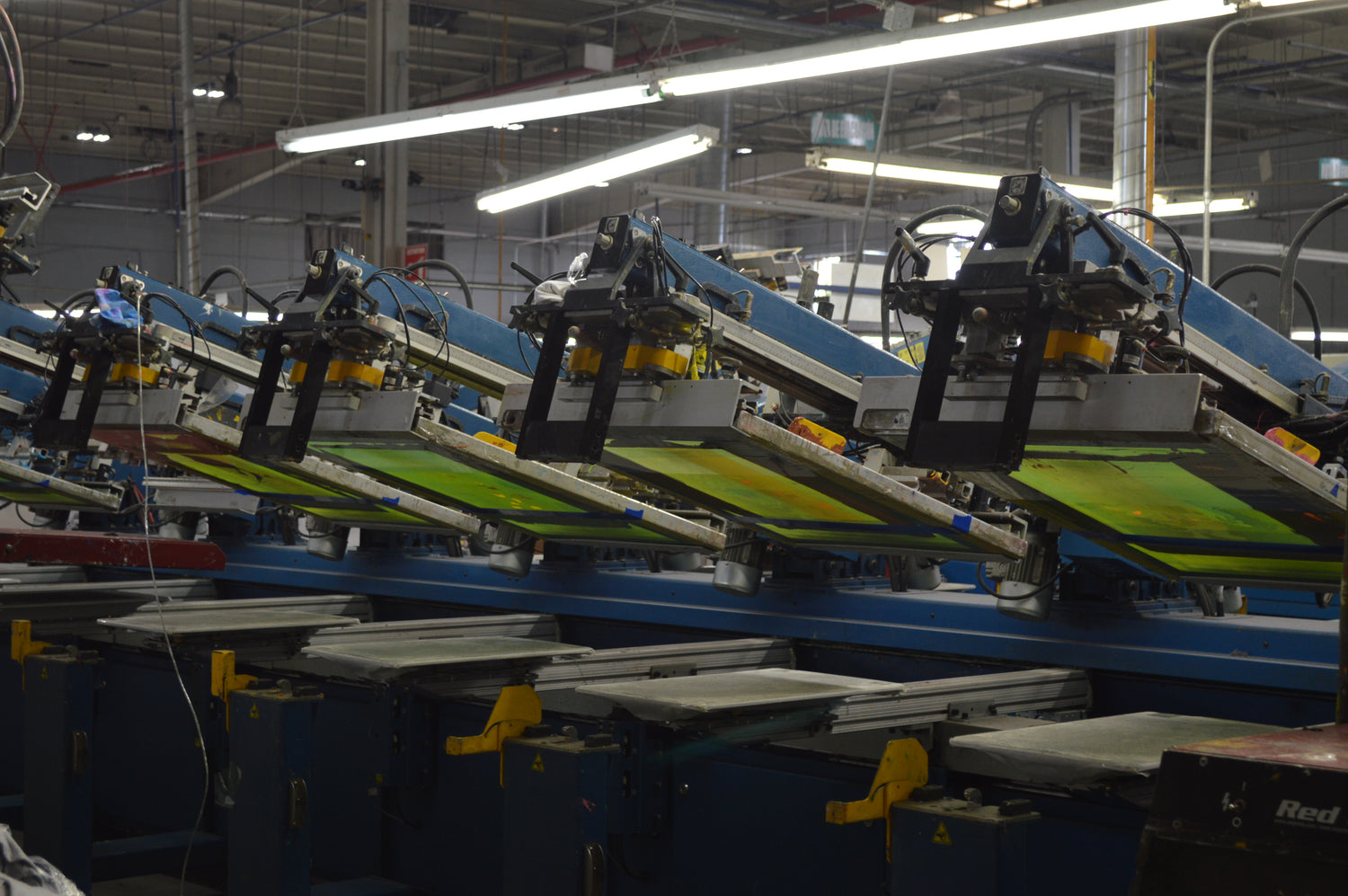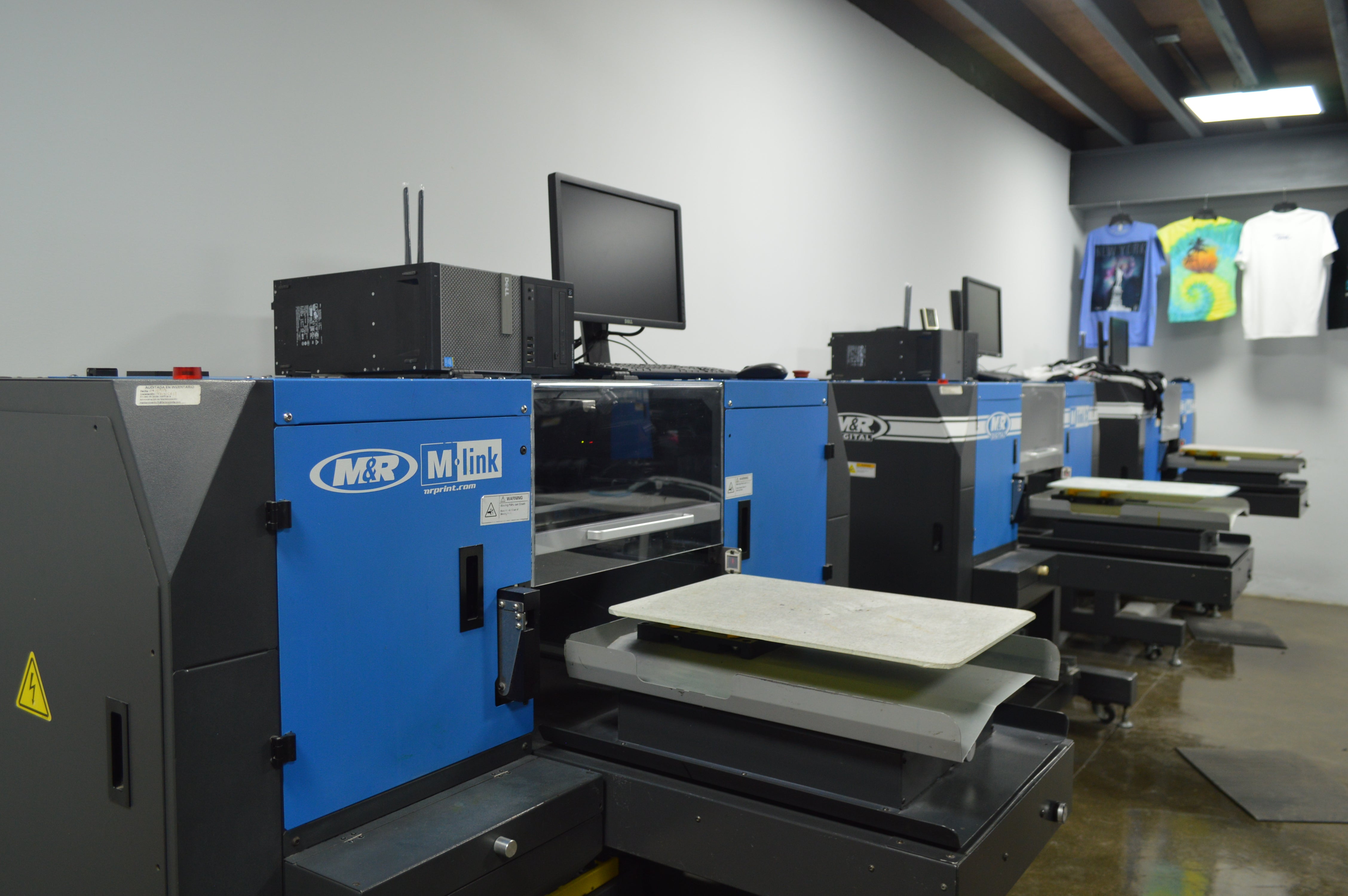DTG vs Screen Printing: Choosing the Right Method for Your Custom Apparel
When it comes to creating custom apparel, there are two primary methods: DTG (Direct to Garment) and screen printing. Each has its own unique advantages and disadvantages, depending on what you’re trying to create and how many items you plan to produce.
At Factory1, we understand the importance of choosing the right method for your custom apparel needs. That’s why we offer both DTG and screen printing services, so you can choose the option that best meets your requirements. Whether you’re looking to print your own t-shirts, hoodies, or hats, we’ve got you covered.
In this article, we’ll explore the differences between DTG vs screen printing, including their respective pros and cons. We’ll also provide guidance on when to choose one method over the other, ensuring that you get the best results possible for your custom apparel projects.
DTG vs Screen Printing: Which Method is Right for You?
When it comes to choosing the right method to print your own t-shirts, you may be wondering which one is best for your needs and budget. DTG (Direct-to-Garment) and screen printing are two popular methods that have both advantages and disadvantages depending on your specific requirements.
At Factory1, we offer both DTG and screen printing as options for custom apparel. Here are some factors to consider when choosing DTG vs screen printing:
DTG Printing
When it comes to DTG vs screen printing is important to know that DTG printing is a digital method that directly prints ink onto the fabric of the t-shirt. Here are some pros and cons of using DTG:
Pros:
- It’s the best option for complex designs with lots of colors and gradients.
- There are no setup costs, so it’s perfect for small orders.
- The print is smooth and soft to the touch.
Cons:
- It’s not cost-effective for large orders.
- The colors may not be as vibrant and long-lasting as with screen printing.
- It’s not ideal for printing on dark-colored garments.
Screen Printing
When it comes to DTG vs screen printing, is important to know that screen printing involves creating a stencil, or “screen,” where ink is pressed through onto the t-shirt. Here are some pros and cons of using screen printing:
Pros:
- It’s cost-effective for large orders.
- The colors are vibrant and long-lasting, especially on dark-colored garments.
- You can choose from a variety of inks.
Cons:
- There are setup costs involved, making it less ideal for small orders.
- The print may not be as detailed or soft as with DTG.
Ultimately, the decision DTG vs screen printing comes down to your specific needs and budget. If you have a small order or a design with many colors, DTG may be the best option for you. If you have a large order and need vibrant colors on dark-colored garments, screen printing may be the way to go, on this depends the decision between DTG vs screen printing.
At Factory1, we’re happy to walk you through the pros and cons of DTG vs screen printing to help you make the best decision for your project.
Understanding the Basics of DTG Printing
When it comes to creating custom apparel, there are two main methods to choose from: DTG printing vs screen printing. In this section, we’ll focus on the basics of DTG printing, so you can better understand this process and decide if it’s the right choice for your project.
DTG, or direct-to-garment printing, is a modern technique that involves printing an image or design directly onto a garment using a specialized inkjet printer. It’s a popular choice for creating high-quality, complex designs on t-shirts, hoodies, and other types of apparel. Unlike screen printing, which requires a separate stencil or screen for each color in a design, DTG printing is able to print full-color images and designs in a single pass.
We use state-of-the-art DTG printers to create custom apparel for our customers. Our printers are equipped with high-quality inks that bond with the fibers in your garment, resulting in a finished product that looks and feels great. Plus, our DTG printing process is efficient and eco-friendly, since it produces less waste than traditional screen printing methods.
Exploring the Fundamentals of Screen Printing
Screen printing has been around for centuries and is a popular method for custom apparel production. In screen printing, a design is transferred onto a mesh screen, and ink is pressed through the mesh and onto the garment. The ink is then cured using heat to ensure it adheres to the fabric.
At Factory1, we use screen printing to create high-quality, durable designs. Screen printing is ideal for larger orders, as it is a more time-consuming process than DTG printing. However, the quality of the print is unmatched as it provides a vibrant and crisp design.
When selecting the right method for your custom apparel needs, it’s essential to consider the following aspects of screen printing:
- Cost-Efficiency: Screen printing is a cost-efficient choice for larger orders, as the setup costs are spread out over a larger number of garments. So the more items you order, the lower the cost per garment becomes.
- Durability: Screen printing is highly durable, and the ink is designed to withstand multiple washes and regular wear and tear.
- Variety of Inks: Screen printing offers a wide variety of ink options.
- High-Quality Output: Screen printing produces vibrant and long-lasting prints that can achieve high levels of detail and accuracy.
While screen printing can be a great choice for creating custom apparel, it is important to note that it has some limitations. The number of colors is limited, and the more colors you add, the higher the printing cost.
Making Your Decision: DTG vs Screen Printing
When it comes to printing custom apparel, choosing the right method can make all the difference in the quality of the final product. DTG vs Screen Printing is a difficult decision since these are two popular methods that offer distinct advantages and shortcomings. Here’s what you need to consider when making your decision between DTG vs Screen Printing for your custom t-shirts from Factory1.
Quantity and Complexity
Screen Printing is the preferred choice if you require larger quantities. The setup cost to print a single t-shirt with screen printing is more than DTG, so it makes sense to go for screen printing if you’re planning on a bulk order. Additionally, screen printing can handle intricate designs with multiple colors more efficiently and at higher volumes than DTG.
Quality and Durability
DTG printing is the optimal technology for printing detailed designs with multiple colors directly onto the fabric. The final prints are generally sharper, brighter, and colorful than those produced by screen printing. DTG is also durable as the print is infused directly into the fabric with high precision and resists cracking, peeling, and fading under normal wear and tear conditions.
Time and Cost
Printing custom t-shirts using DTG is much faster than screen printing because you don’t need any individual stencils or screens. The overall cost per t-shirt is higher than screen printing, but this is offset by the fact that DTG has no minimum quantity requirements, keeping costs low in that way.
DTG vs Screen Printing is ultimately about your priorities. If you’re looking for a durable and unparalleled print quality for unique designs and low volume printing, DTG is the way to go. If you’re looking for an efficient way to produce high volume prints or a design with just a few solid colors, screen printing is the most economical solution. In the end, selecting the best print method for your custom t-shirts depends on your needs, budget, and timeframe. Factory1 has experience in both, so we can help guide you in the right direction.




Leave a comment
This site is protected by hCaptcha and the hCaptcha Privacy Policy and Terms of Service apply.